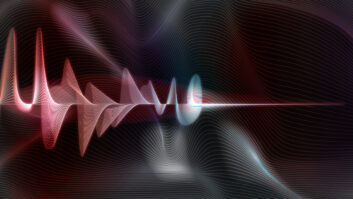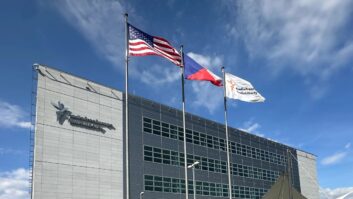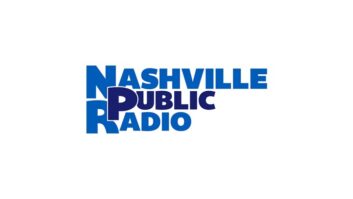The authors are consultant and president, respectively, at Kintronic Labs Inc. in Bristol, Tenn.
AM radio constitutes the most bandwidth-efficient broadcast medium and provides an essential service to many Americans, particularly in rural and remote areas, and those traveling in the vast expanses of this nation. AM radio, due to its generally lower capital requirements, can also provide a realistic setting for family-based, community-focused station programming and ownership, especially in smaller localities. AM radio is truly a national resource, a source of unique voices, particularly in light of its unique propagation characteristics and tremendous reach, especially in times of local, regional and even national emergencies [See Reference 1 at end].
Fundamentally, the two greatest issues currently threatening AM radio are: (1) the worsening electromagnetic environment; and (2) the concurrent failure of the consumer-products industry to provide the listening public with high-quality AM receiver systems (comparable to their FM counterparts).
It has been all too easy for the receiver manufacturers to simply reduce overall receiver bandwidths down to even 2–3 kHz to address the pervasive issues of electromagnetic interference (EMI) noise from power lines, fluorescent-lamp ballasts, personal computers, consumer devices and the like, not to mention broadband static impulses from lightning and increased adjacent-channel and alternate-channel interference from more recently allocated AM stations.
Another factor in the lack of receiver bandwidth was the inability of radio manufacturers to obtain decently matched varactor diodes to provide the required tracking accuracy for the simultaneous electronic tuning of the AM RF front-end, mixer, and local-oscillator stages in their receivers (both home and auto).
Added on top of all this is the progressive trend in the automobile industry to replace metal body parts with plastic (which worsens EMI shielding), adopt windshield-type antennas (which provide markedly poorer reception performance for both AM and even FM), and add a multitude of noise-generating microcomputers for engine control, antiskid braking systems and the like.
The net result has been AM radios with very low audio and reception quality.
It is thus imperative to the sustainability of AM radio that the FCC strongly encourage (or even mandate) significant improvement in consumer AM systems. Without this, the American listening public will continue to regard AM as a noisy, low-fidelity medium and will consequently tune out. Without advanced consumer-receiver features to address the severe noise, interference, and bandwidth challenges to good, clean AM-band reception, the appeal of AM to the public inevitably will be lost.
The technical goals of vastly-improved consumer AM receivers are actually near at hand. The great majority of the required receiver functions are already offered by international chip manufacturers such as Silicon Labs (Austin, Texas), NXP Semiconductor (Netherlands), ST Microelectronics (Switzerland), and Frontier Silicon (U.K.) in their advanced software-defined radio (SDR) AM/FM chip products.
For example, it is now possible to offer agile, programmable channel bandwidths and audio high-cut filters (to address the increased levels of nighttime and critical-hours skywave adjacent-channel interference, or ACI), noise limiters and adaptive RF/IF AGC functions. A few U.S.-specific enhancements such as adaptive notch filters at 10 kHz could be easily added.
BACKGROUND
We acknowledge the FCC’s past leadership role in the overall thrust to improve AM radio, beginning in the 1989–1991 period. It is our view that the FCC in large measure did its job well with the establishment of wider-bandwidth, consistent AM transmitter performance, reduction of mutual broadcast interference, and the encouragement of the production of better receiver hardware by the consumer-electronics industry.
Initially, the consumer manufacturers made a concerted attempt to specify performance of AM receivers through the 1993 AMAX standard, a joint effort of the EIA and the NAB, with FCC backing. In that standard, the desirability for higher receiver bandwidths and noise performance was broadly acknowledged, with the purpose to restore the reception of high-quality AM signals to the public. An AMAX-certified receiver had at least 7.5-kHz bandwidth for home and auto versions, and 6.5-kHz for portables, plus some form of bandwidth control, either automatic or at least two manual settings (e.g., “narrow” and “wide”). It also had to meet NRSC receiver standards for distortion, de-emphasis and effective noise blanking, and include provisions for an external antenna and coverage of the Expanded AM band.
The FCC rapidly followed up on this with codification of the CQUAM AM stereo standard, also in 1993. At this point, the stage appeared to be set for rejuvenation of the AM band.
Nevertheless, with the legacy of confusion and disappointment in the rollout of the multiple incompatible AM stereo systems, and failure of the manufacturers (including the auto makers) to promote AMAX radios effectively, coupled with the ever-increasing background of noise in the band, the public soon lost interest and moved on to other media.
It appears in 2014 that the FCC has a fundamental choice for AM radio: Either take a firmer hand in pushing new, improved receiver technology implementations, or permit AM to spiral downward into a slow, painful death.
PRECEDENT
The legal precedent for the former is quite strong.
In the early 1960s, the UHF television band was close to economic extinction, as very few TV receivers were equipped with UHF tuners. This was a problem at the time, since the major TV networks were well established on VHF, while many local-only stations on UHF were struggling for survival. As a result, the All-Channel Receiver Act was passed by the United States Congress in 1961, to allow the FCC to require that all television set manufacturers must include UHF tuners.
Specifically, the Act provided that the FCC would “have authority to require that apparatus designed to receive television pictures broadcast simultaneously with sound be capable of adequately receiving all frequencies allocated by the FCC for television broadcasting.” Under authority provided by the All-Channel Receiver Act, the FCC also adopted a number of technical standards to increase parity between the UHF and VHF television services, including a 14-dB maximum UHF noise figure for television receivers [2].
It would seem that due to a huge receiver disparity, AM radio is now in a similar situation, which must be remedied very soon. The fundamental solutions for AM are strikingly similar to those of UHF-TV; receiver parity with the dominant FM band must be established to enable the public to make listening choices on a more level playing field. This critical receiver audio bandwidth issue is depicted in Fig. 1.

The original UHF tuner improvements mandated by the All-Channel Receiver Act represented a relatively small cost increment for the TV sets of the day; similarly, with modern high-volume chip technology, the needed signal-processing features for the AM-side of modern receivers can be added for about $1–2 at most.
Clearly, automobiles are the prime venue; home hi-fi systems and portables will undoubtedly follow. Further, it would seem logical that all HD Radio receivers also be upgraded on analog AM; with the greater processing complexity of these premium units, the additional cost on a per-unit basis to augment them would be negligible. If congressional action is actually deemed necessary to enable all the requisite steps in AM revitalization to occur, it is encouraging to remember that the CALM Act was very recently passed to address a far less significant public issue.
SPECIFIC AM REVITALIZATION PROPOSALS
In agreement with the broadcast engineering community, we generally support the six specific proposals offered by the FCC in the recent AM Revitalization Notice of Proposed Rulemaking (NPRM).
These include: (A) the opening of exclusive filing windows for FM translators for AM licensees; (B) relaxing daytime and (C) nighttime community coverage standards; (D) eliminating the AM “Ratchet Rule” in nighttime facility changes; (E) encouraging wider implementation of modulation-dependent carrier level-control (MDCL) technologies; and (F) modifying minimum AM antenna efficiency standards.
These proposals from the FCC constitute a good start in boosting AM broadcasting; however, much more profound policy changes will be required to assure the continuation, growth and economic sustainability of AM radio in the highly competitive, evolving multimedia environment anticipated in the next several decades.
In part (G) of the NPRM, the FCC requested the submission of further specific proposals to aid in the revitalization of AM broadcasting. We will detail the salient problems now plaguing AM radio, most of which are not in control of the AM broadcasters.
Further Proposal 1 — Immediately Enforce FCC Part 15 Rules on Unintentional Radiators for Electric Utilities, Telephone Companies, Cable Companies and Consumer Devices that Degrade AM Radio Reception
The gradual growth of EMI from electric power lines (at all voltage levels), telephone and cable lines, and a variety of consumer devices has been a tremendous detriment to AM broadcast reception. Part 15 of the FCC rules sets reasonable limits for both conducted and radiated emissions, both within the AM band and elsewhere. Although AM-band emissions are especially problematic, out-of-band radiation can also affect amateur radio operations, and other communications users; such illegal emissions are rightfully deemed “harmful interference” and have been universally understood as such in the communications field. The proliferation of bad high-voltage line insulators, transformer bushings, transient protectors and line/ground connections has led to broad degradation in AM radio reception, particularly since, in most cases, power lines follow roads.
Although electric utilities are the most common offenders in this regard, telephone and cable firms also have caused problems, usually due to DSL and other forms of signal leakage. Most current AM radios are quite susceptible to the impulse-type noise. Once this raucous “buzz” even temporarily overwhelms the radio, the listener is strongly prompted to switch to FM or another programming source. The FCC must protect the public interest, along with its licensed broadcasters, by aggressively enforcing its own regulations. A timely Notice of Violation letter to most utility general managers and the like should bring a quick response; hefty fines for repeat offenders would assure more than token efforts to resolve these emission issues.
Closer to home, many existing radios, TVs, consumer devices (e.g., CD players), computers, MP3 players and such, emit very high levels of local RFI produced by clock circuits, RF synthesizers and microprocessors. Poor unit design thus impairs or even precludes nearby AM radio reception. Common problems with FCC Laboratory Type-Accepted, Verified or Certified devices for consumers should be resolved, with some extra effort, through existing channels. Numerous internationally marketed products (from radios to fluorescent ballasts and LED drivers) with RF power-line filters for EU countries, when sold in the U.S. have filter components missing, in clear violation of Part 15 Rules. This major problem should be soluble through concerted FCC action, particularly on resellers. As a direct result, the AM broadcast medium will be afforded some critical relief to reception noise and coverage issues. FCC action here is absolutely vital.
Further Proposal 2 — Establish Minimum AM Receiver Performance Levels to Provide Close Parity with FM-Band Counterparts
It is likewise essential that very close to full parity be established for new AM radio receivers vs. their FM counterparts. This includes: (1) low internal noise floor, well below the average AM-band atmospheric noise level; (2) high overall RF sensitivity, selectivity and dynamic range, to provide adequate amplification of weak signals, even in the presence of significant adjacent- and/or alternate-channel signals, especially in strong-signal environments; (3) highly effective noise (EMI) rejection, including staged RF and IF noise blanking, accompanied by appropriate audio blanking/expansion when required; (4) full 10-kHz audio bandwidth capability with low detector distortion, plus dynamic bandwidth control (including adaptive 10 kHz notch filtering) as dictated by noise and adjacent-channel interference; and (5) stereo capability (if the receiver has FM stereo capability, it must have CQUAM decoding for AM).
Without the first three requirements, basic AM reception will suffer compared with FM; without the last two, the output sound quality cannot be closely competitive with FM. Adaptive receiver bandwidth control for two signal conditions (urban vs. fringe) is illustrated in Figs. 2 and 3. The key suggested receiver specs are summarized below:


Audio Bandwidth: 50 Hz to 9–10 kHz typical, adaptive with a minimum nominal bandwidth of 7.5 kHz; reduced adaptive bandwidth (~ 3-kHz minimum) permitted in high noise or adjacent-channel interference situations (i.e., nighttime). Variable-Q notch filter @ 10 kHz standard.
Signal-to-Noise Ratio (Ultimate) minimum 55 dB, preferably ≥ 60 dB.
Sensitivity: –120 dBm (~1 mV) for a signal-to-noise ratio (SNR) of 10 dB.
Selectivity: 25–50 dB (adaptive, using co-, adjacent-and alternate-channel detection).
Dynamic Range: ≥ 100 dB.
Noise Figure: 1–3 dB.
Image Rejection: 50 dB or better.
Intermodulation: IPIP intercepts +10 to +40 dBm.
IF: low with image-rejecting down-conversion, or alternatively, double (up-down) conversion.
Stereo Separation: minimum 25 dB, 50 Hz–10 kHz
These specs will assure excellent performance in both strong-signal and fringe areas, both during daytime and at night, even with significant skywave interference.
The advanced adaptive receiver features mentioned above, plus others, can be economically implemented using modern DSP-based radio chips; a typical AM/FM unit block diagram is given in Fig. 4.

Further Proposal 3 — Immediately Permit Local Synchronous AM Booster Stations
The technology of local and wide-area synchronization of dispersed transmitters via GPS and similar means has been well-proven in numerous communications venues, including television, cell-phone base stations and even in HD Radio systems; thus, the technology is well-established and there is no need to continue its “experimental” designation. The use of synchronous-booster systems could be of significant benefit to AM stations with limited nighttime coverage, as well as other stations with deep nighttime directional-antenna nulls. All these stations could greatly benefit from the improved population coverage at night and during critical hours, particularly where urban/suburban sprawl has expanded beyond the stations’ existing strong-signal zones.
A typical example of the benefit can be illustrated in the Tri-Cities metropolitan area of upper East Tennessee/Southwest Virginia, which consists of three principal communities (Johnson City, Kingsport and Bristol) of roughly 50,000 population each, and mutually separated by about 25 miles. Each small city has nighttime AM, Class C, D and/or acutely limited Class B stations, which send main nighttime lobes away from the other cities in the metro. As a result, there is no strong universal nighttime local AM signal for the area.
The use of synchronous boosters could clearly provide new, productive nighttime AM signals into each community from the local area, at very low cost to the stations involved. Further, synchronous boosters could prove to be an economic boon to many struggling AM operations by permitting tailored coverage areas to match listening locales (Fig. 5).

Further Proposal 4 — Mandate Regional/National Synchronization of All AM Stations
Multiple papers, published by the IEEE and NAB in the 2007–2010 time frame [3] [4] and four U.S. patents to Oak Ridge National Laboratory (ORNL) [5] described a straightforward but highly accurate, inexpensive carrier-frequency synchronization scheme for actively, automatically locking multiple, remotely located AM broadcast transmitters to a common frequency reference source such as GPS. The extremely tight frequency lock (to ~1 part in 10 or better) permits the effective elimination of audible and even sub-audible beats between the local station’s carrier signal and interfering distant station carriers.
Generally, an AM radio listener during the evening and nighttime hours, and to a lesser extent in the early morning, receives undesired skywave signals from several distant co-channel stations as well as the desired local groundwave signal. These carrier-beat components cause annoying modulations of the desired station’s audio at the receiver and concurrent distortion of the audio modulation from the distant station(s).
This is quite understandable since the average carrier power is on the order of 10 dB above that of typical levels of the sideband modulation components, and the inter-carrier beats will dominate the receiver’s AGC and thus modulate the audio level. These beat-related effects are a principal factor in the degradation of evening and nighttime AM fringe-area reception quality and the resulting loss of outlying listeners for virtually all AM stations. The high-level artifacts (volume modulation, cyclic distortion and pronounced swishing sounds) often quickly induce listener tune-outs.
This situation is not only progressively worse further into the fringe areas of the desired stations (usually in the outer suburbs of the city of license), but also occurs much closer in, in the deep nighttime nulls of directional stations. The low-power pre-sunrise/post-sunset (PSRA/PSSA) operations at many Class D stations, only exacerbates these problems.
If we employ carrier synchronization, all of these signals’ frequencies can be held to within about 0.01–0.001 Hz of each other, and any resulting carrier beats will be of such long periods that the beats will be effectively suppressed by the action of the receiver’s AGC circuitry and become completely unnoticeable to the listener. The significant reduction or elimination of the beats and related effects achievable via synchronization will greatly enlarge the effective co-channel interference-limited listening area of the desired station (from 4 to 10 times as indicated in our tests, dependent on program material) and simultaneously reduce the corresponding interference of the local transmitter to the distant stations.
In addition, AM stereo (CQUAM) reception will be particularly improved by minimizing the phase shifts induced by co-channel interfering signals. HD Radio signals will also benefit via reduction in beats from co-channel analog signals. The net result of these effects will be particularly beneficial to nighttime operations at local Class C and Class D stations, whose coverage areas are already acutely curtailed by heavy co-channel skywave interference. For these latter classes, the near-quadrupling of equivalent coverage area at night should be a major benefit, particularly to listeners in outlying suburban areas (see Fig. 6).

The principal drawback to the approach is a practical implementation issue: All stations must be closely frequency-locked to a common precise reference or the beats will not be eliminated. It is therefore incumbent on the FCC to mandate the wide-area synchronization requirement for all AM stations as soon as practicable. In our view, wide-area AM transmitter synchronization is (and at very low cost) the only technology that, when adopted, will immediately benefit all stations, all frequencies and all receivers, both day and night.
CONCLUSION
AM radio is a longstanding American institution, a source of unique voices and one that we can ill afford to abandon. During the recent national disasters, Hurricane Katrina and superstorm Sandy, AM radio stations proved to be the news source that the public utilized more than any other when telecom and other services were unavailable.
We believe that AM radio stations can be relied upon to provide needed service well into the future, but the FCC must take several bold steps in the very near future to preserve AM radio for future generations of Americans. We believe that the suggested actions can be undertaken rapidly to encourage a general revitalization of the AM radio service, and we strongly encourage the FCC to take them now. Our proposals are driven by our overriding view that the FCC must move forcefully to enforce Part 15 unintentional radiator rules on utilities and others, and further mandate major improvements in AM receiver performance to achieve near-parity with FM. Also included in our proposals to improve AM reception are the simplified adoption of synchronous booster stations to augment existing AM station coverage and the mandate of wide-area GPS-based synchronization to significantly reduce co-channel interference via the elimination of carrier beats.
Without these high-level actions, many of the other suggestions for improving AM service will likely become moot unless the listening public is incentivized to return to the band, via the rapid establishment of noticeably better audio and reception conditions throughout the U.S.
REFERENCES
[1] Kintronic Laboratories, Reply Comments in FCC Docket 13-249, “AM Revitalization,” filed March 20, 2014, on fcc.gov website.
[2] All-Channel Receiver Act, Wikipedia article, http://en.wikipedia.org/wiki/All-Channel_Receiver_Act.
[3] Stephen F. Smith and James A. Moore, “A Precision, Low-Cost GPS-Based Synchronization Scheme for Improved AM Reception,” IEEE 2006 Broadcast Technical Symposium, Washington, DC, Sept. 29, 2006.
[4] Stephen F. Smith, James A. Moore and David W. Allan, “A Precision, Low-Cost GPS-Based Synchronization Scheme for Improved AM Reception,” National Association of Broadcasters Technical Conference, Las Vegas, April 15, 2007.
[5] U.S. Patents 7,881,416; 7,587,017; 7,218,696; and 6,563,893, to S. F. Smith and J. A. Moore.
Comment on this or any story to [email protected].





